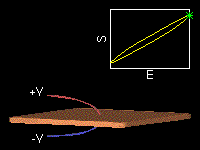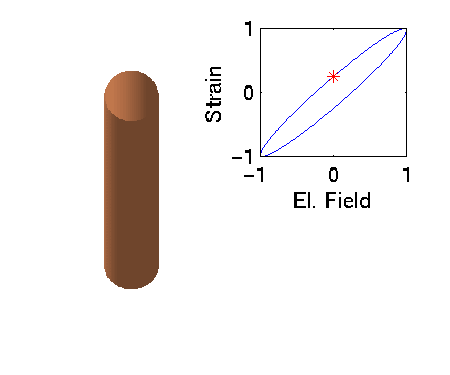Piezoelectricity
Piezoelectricity is a property shown by certain classes of crystalline materials. When mechanical pressure is applied, the crystalline structure produces a charge proportional to the pressure. This charge can then be converted into a voltage using a charge amplifier. Conversely, when an electric field is applied the crystalline structure changes shape, producing dimensional changes in the material. The latter principle is the basis for electro mechanical actuators.
 Piezoelectricity was first discovered by Jacques and Pierre Curie in 1880.
Piezoelectric materials have been widely used for electro mechanical transducers, such as filters, sensors and actuators (Cady1946).
Piezoelectricity was first discovered by Jacques and Pierre Curie in 1880.
Piezoelectric materials have been widely used for electro mechanical transducers, such as filters, sensors and actuators (Cady1946).
A section through a piezoelectric stack element can be seen in the following picture. Note that the cut of the stack element is faulty, i.e. the cut should have been between the two white parts on the right hand side. A cut as illustrated in the photograph results in less capacitance and hence less displacement when a electric fiel is applied.

The following picture illustrates how a piezoelectric tube behaves when a sinusoidal electric field is applied.

[
Research
| Main
| About me
]
Last updated on the 14th of April, 1998
T.Hack - th206@eng.cam.ac.uk



